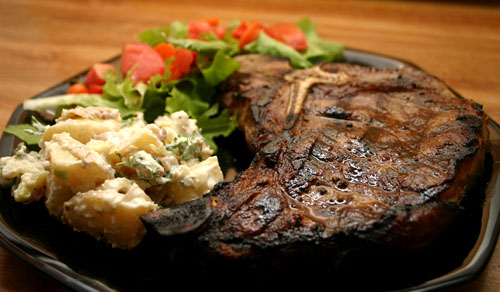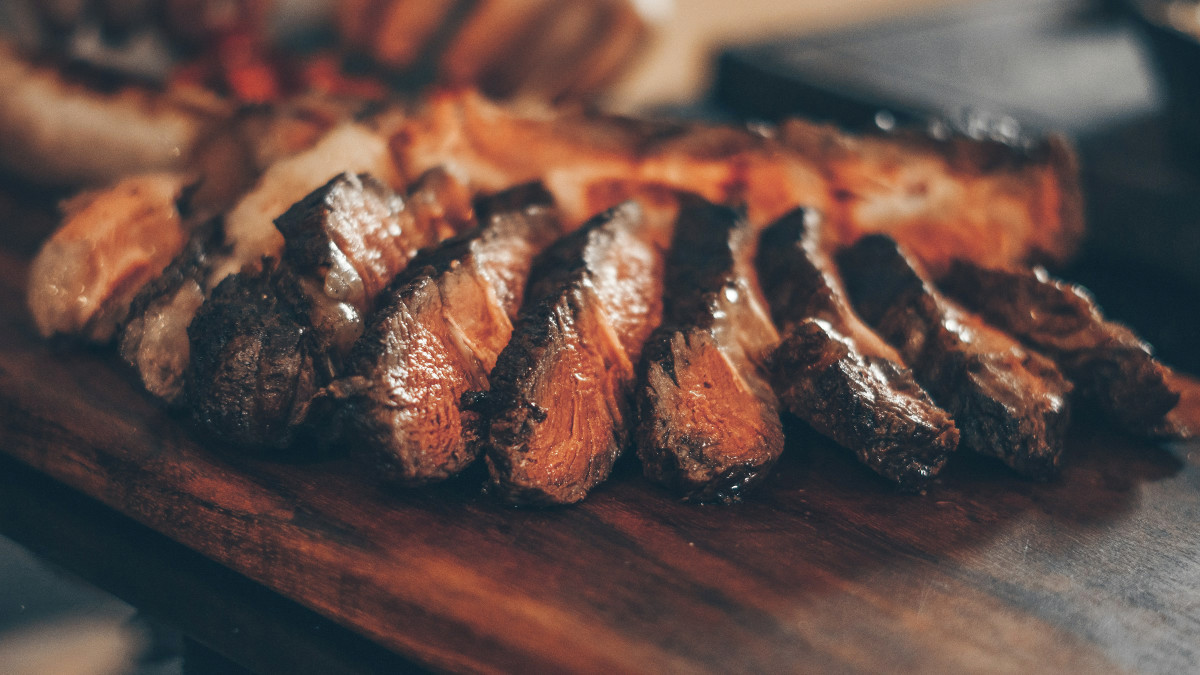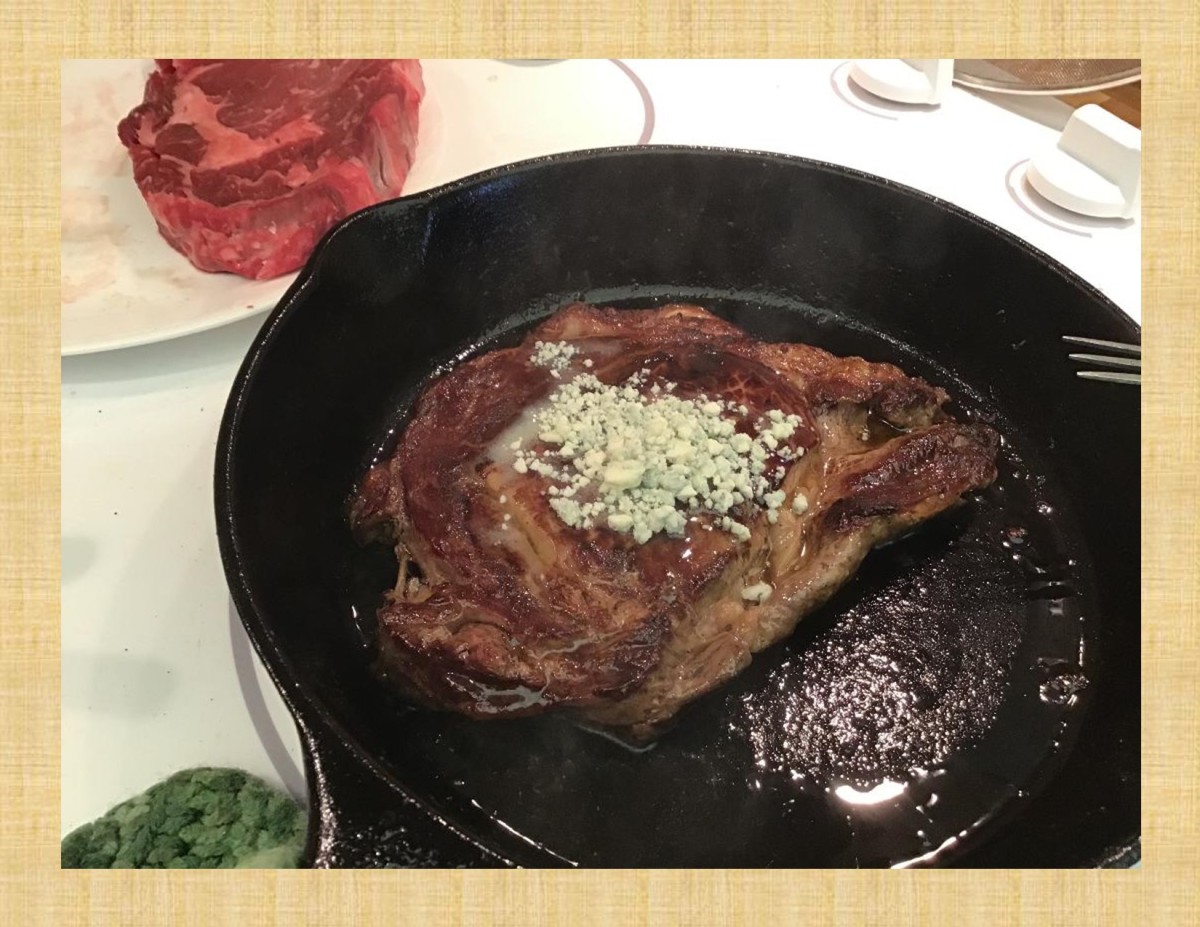- HubPages»
- Food and Cooking»
- Main Dish & Side Dish Recipes»
- Beef Recipes
The Perfect Steak, Pt. 1: How to Pick a Steak Cut
An interview with Morgan Davis

For Father's Day, one of my gifts to my husband, Morgan, was two fresh top-quality steaks for him to grill with his father. We don't ever have the money to splurge like that, so he enjoyed the occasion thoroughly. It gave me the idea to interview him about the art of selecting and cooking a perfect steak, a topic on which he has become quite well-educated.
Morgan has long been a steak connoisseur. He has been perfecting his steak selection and cooking technique for a decade, and he spent over a year working at a high-end steak and chop house, Il Paradiso, and at a fine-dining traditional Italian restaurant, La Caterina Trattoria, both in downtown Asheville, North Carolina. He has picked up several techniques and tricks over the years, and today he's going to share them with you.
In the first part of this interview, we talk about selecting a good cut of steak. In the second part, found here, we talk about how to cook steak.
You have very strong opinions about steak. How do you think someone can cook a "perfect steak"?
The key to a perfect steak is really pretty simple. You just have to keep two things in mind: you need a great cut of beef and a really hot fire.
What makes a great cut of steak?
First off, you can't buy a tough, gristly and poorly cut piece of meat and expect to turn it into something incredible by cooking skill alone. There are some tricks for making use of cheaper beef such as skirt steak or flank steak, but instead I'm going to tell you about how to achieve a really perfect steak experience at home. We'll leave the tips for getting the most out of a frugal cut of meat for after the credit card bill arrives. For a perfect steak, you need to start with a perfect cut of meat.
Tenderloin is usually the most expensive, is that what you mean?
Most people do think of tenderloin medallions when you talk about perfect steak, but it is really a subjective thing. In my opinion, getting tenderloin is a mistake—just because tenderloin is the most expensive doesn't mean that it's the best. Tenderloin is a little like the tofu of beef—it's lean, tender, but relatively flavorless. Tenderloins are ideal for fancy preparations involving something like a tri-peppercorn demi-glace, served pre-sliced alongside a lobster tail on a little mound of risotto with an herb garden of garnish sticking out of the pile. While that is a great meal to drop one hundred dollars on in a fancy restaurant, it's not the sort of thing I think about when I hear STEAK.
Fat is an important part of the flavor in a steak. While you don't want to find yourself chewing on great gobs of beef fat (well, most people don't), just the right amount of fat can leave a steak tender, juicy, and flavorful without ruining the feel of it in your mouth. This is what is referred to as 'marbling.' A steak with a nice, medium red color shot through with thin, swirling veins of fat is a nicely marbled cut. In general, Ribeye and T-Bone steaks are usually nicely marbled. A New York Strip will be leaner but still tasty, and the Porterhouse steak contains several of these cuts within its monstrous girth. My favorite is usually the Ribeye steak (or "rib eye steak"), but I go with whatever cut looks best at the butcher's counter.
What sorts of things should someone look for when shopping for steak?
When I'm at the store, I keep these basics in mind.
Look at the color of the beef. Gray or brown is bad and steak that is a dark, ruby red or purple has probably been previously frozen or poorly stored. Look for steak that is a vibrant medium red to dark pink with good marbling.
Look for thick cuts--a good steak will be a solid inch and a half. Anything less cooks too fast. The steak should be fresh and not frozen. The freezing and thawing leave you with a steak that is limp and shapeless with spongy meat that drips its juice all over the counter before you cook it. Frozen meat often ends up being tough and dry once it is cooked--avoid it.
In general, most mainstream American supermarkets don't know a good steak from a pile of hamburger. The cuts of meat sold shrink-wrapped on Styrofoam trays are usually poorly cut and often previously frozen. Look for good steak at specialty grocers who really take care to provide high-quality foods. You might even try asking a good local steakhouse if they’ll sell you uncooked cuts for a reasonable mark-up.
What sorts of steak cuts and types of beef do specialty markets have?
Ideally, try to find dry-aged beef. Dry aging is a process in which a large cut of beef is aged for a period of 10-28 days in a dry, cool environment. The steaks are cut to order and sold wrapped in butcher paper. These steaks often show some discoloring to the untrimmed fat at their edges and will probably require some trimming before you cook them, but they are well worth the extra effort. Dry aging, through the alchemy of enzymes in the meat, concentrates the flavor while tenderizing it.
If you can't get a dry-aged steak, look for a meat counter that has the meat sitting under glass and open to the air in the cooler. Avoid 'wet-aged' meat, or meat that has been wrapped in plastic, which is the norm.
END PART 1, for part two, How to Cook Steak, click here





